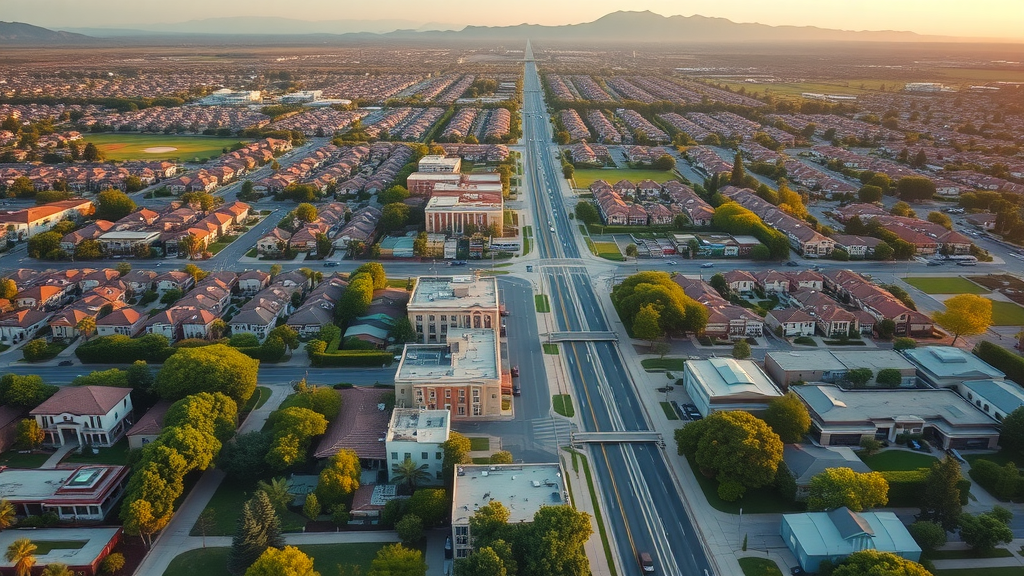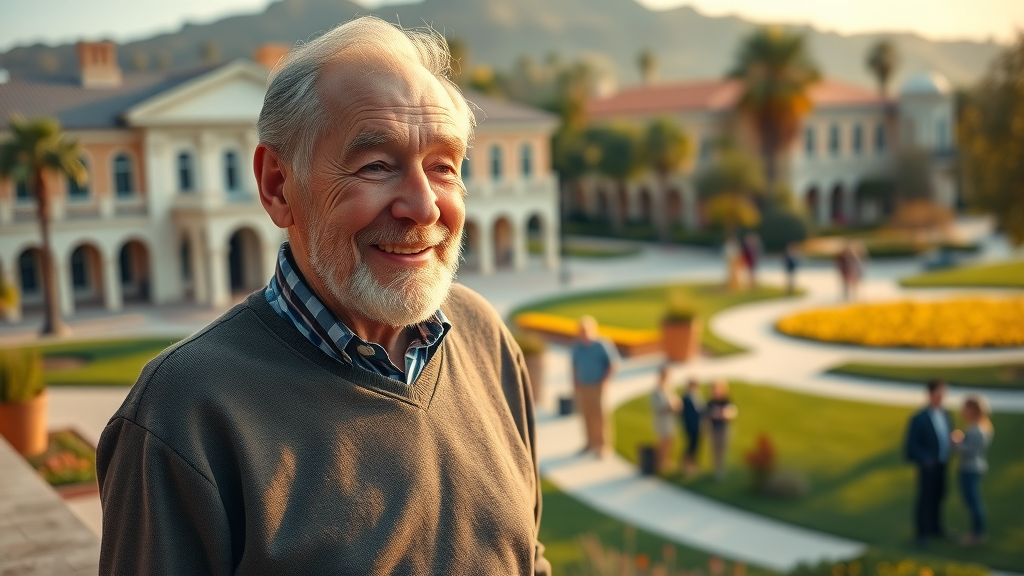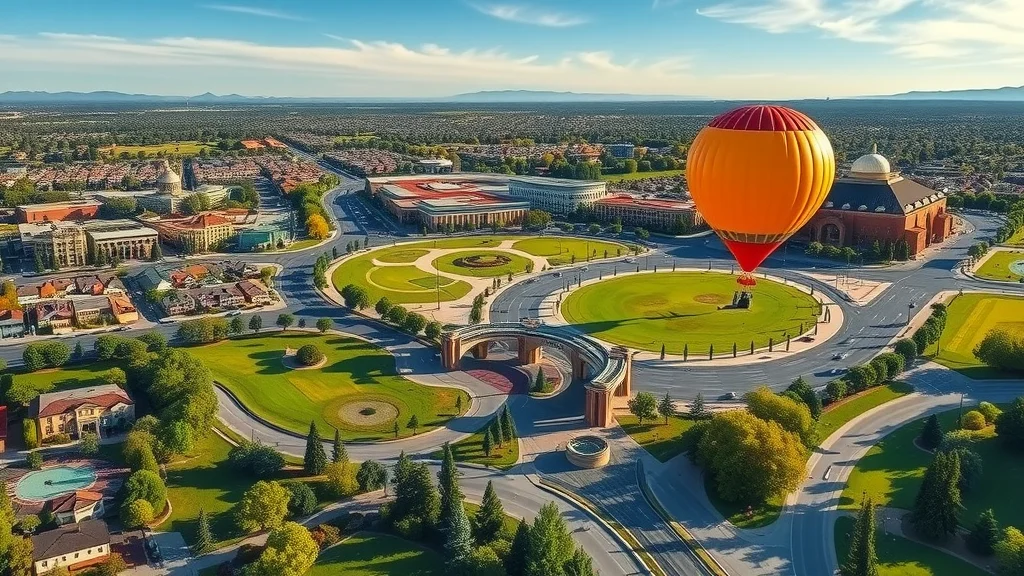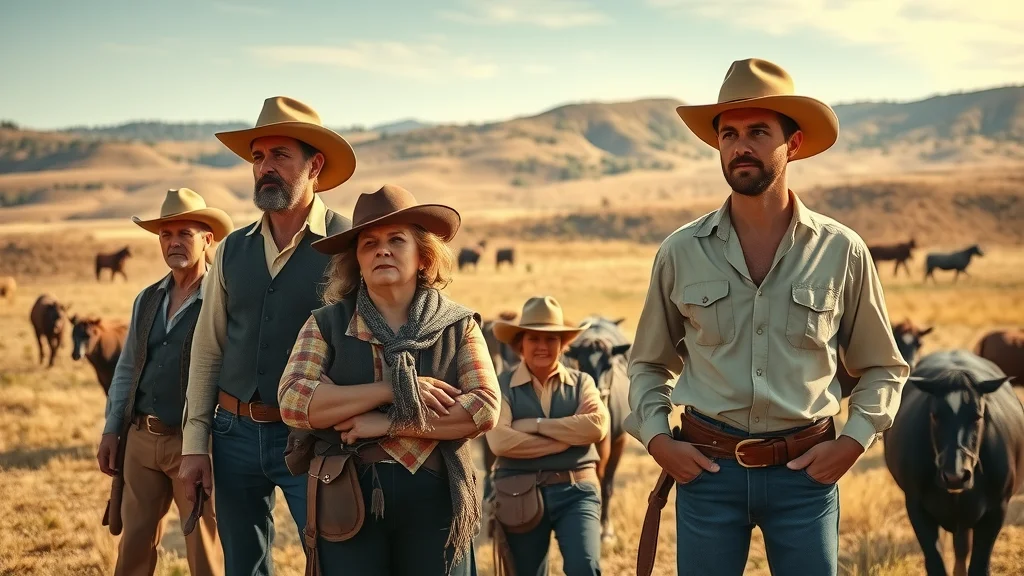Did you know that Donald Bren has donated more than $1.3 billion to various causes, quietly making him one of the most generous philanthropists in the United States? Yet, his influence extends even further. The planned communities and open spaces of Southern California front yards, parks, and business hubs owe much of their character to Bren’s unique leadership style. In this article, we pull back the curtain on the secrets of Donald Bren's leadership and philanthropy, revealing how one man’s vision continues to shape lives, landscapes, and futures across Orange County and beyond.
A Surprising Look at Donald Bren Leadership and Philanthropy
The foundations and philosophy behind Donald Bren's leadership and philanthropy
How real estate shaped his approach to community building
Key philanthropic milestones and their broader impacts
Exclusive insights from opinion leaders and industry experts
Lesser-known facts about the Irvine Company’s influence on Southern California
Donald Bren's leadership and philanthropy stand out due to his holistic, master-planned approach in both business and giving. His journey from a real estate developer to one of the nation’s most impactful philanthropists tells a story of vision, persistence, and a deep-rooted belief in community enrichment. Delving deeper, we see his tenure as chairman of the Irvine Company didn’t just propel the organization’s success; it set new standards for environmental stewardship and the seamless integration of public spaces into the Southern California urban footprint.
What makes Bren’s approach truly remarkable is how he blends real estate advice with socially responsible investments, reshaping how cities like Irvine, Los Angeles, and Newport Beach engage with their residents. As we navigate the layers of his career and contributions, you’ll discover why Bren’s steady hand and quiet ambition have left a mark far deeper than most public figures or even other top philanthropists in the nation.

Donald Bren: The Man Behind the Leadership and Philanthropy
Early Life and Rise of Donald Bren
Donald Bren didn't start as an icon of real estate or philanthropy. His early roots can be traced back to Los Angeles, California. Bren was born into a family connected to the world of development; his father was a successful real estate developer, and his mother, Marion, had a strong sense of community. After attending the University of Washington, Bren served as an officer in the United States Marine Corps, an experience that instilled discipline and a sense of mission that he would carry into his business pursuits.
By the late 1950s, Donald Bren began his journey into real estate development, initially focusing on building homes in the brand-new community of Mission Viejo. As California's population boomed post-World War II, he capitalized on opportunities in urban land, office buildings, and innovative planning projects. It was this drive to create not just profitable ventures but flourishing communities that positioned Bren to eventually acquire a controlling stake in the Irvine Company, a pivotal turning point that would redefine both his legacy and the landscape of Orange County and Southern California.
The Irvine Company: Shaping Orange County and Southern California
The lifecycle of Southern California’s most celebrated planned communities would be incomplete without acknowledging the Irvine Company and its dynamic leader, Donald Bren. Founded in 1864 and purchased by Bren in 1977, this iconic company owns and manages over 120 million square feet of real estate, spanning residential, commercial, and open space developments. The company is credited for the masterful transformation of the Irvine Ranch, converting sprawling ranchland into a vibrant urban-suburban tapestry ingrained with parks, schools, and sustainable features.
Under Bren’s guidance, the Irvine Company led the way in integrating open space and greenbelts with thriving business and residential areas. His vision distinguished Irvine from its neighbors, providing a blueprint for growth that prioritized quality of life and environmental preservation much needed innovations for both Orange County and the greater Southern California region.

Real Estate Mastermind: Bren and the Irvine Ranch Legacy
Bren’s approach to real estate has always diverged from the "build it fast, sell it quick" mentality. Instead, he viewed land as a long-term legacy, a trust to be enhanced, protected, and stewarded for future generations. By elevating the Irvine Ranch into a meticulously planned urban landscape, Bren created an environment where public schools, transportation, and business hubs were thoughtfully balanced with parks, open spaces, and natural landmarks. The transformation inspired similar efforts across Orange County, influencing the way real estate developers now integrate environmental science, education, and sustainability with profit.
As a result, the Irvine Ranch isn’t just another real estate story. It stands as a living testament to vision, with a focus on environmental conservation, setting aside tens of thousands of acres for parks and hiking trails. Thanks to Donald Bren, Orange County’s reputation for livability, natural beauty, and educational excellence continues to flourish.
From Orange County to Los Angeles: Expanding Influence
Donald Bren’s ambition didn’t stop at Orange County’s borders. Through major investments and strategic planning, he expanded the Irvine Company’s reach into Los Angeles and other Southern California cities. The company’s footprint now includes premier office buildings, residential communities, shopping centers in places like Newport Beach and even Santa Barbara, and commercial properties that define the region’s modern skyline.
Bren’s commitment to responsible development can be seen in the seamless blend between urban land and open space—ensuring public spaces, trails, and community amenities were never sacrificed for short-term gain. This harmonization between commerce and conservation is one of the distinctive secrets behind the enduring success of his leadership in the real estate sector.
Watch: Profile of Donald Bren: Leadership in Real Estate and Philanthropy
Donald Bren Leadership and Philanthropy: Core Principles and Achievements
Professionalizing the Master-Planned Community
One of the defining innovations of Donald Bren's leadership and philanthropy was his move to professionalize the master-planned community. Bren didn’t simply oversee urban growth; he shaped every detail by assembling teams of landscape architects, planners, and ecologists to design neighborhoods that balanced economic opportunity with green space. His devotion to master-planning produced communities where walkability, safety, high-performing public schools, access to medical facilities, and recreation were core values, not afterthoughts.
This attention to detail and demand for excellence resulted in places like Irvine, Newport Beach, and Mission Viejo being recognized as some of the best-managed urban environments in the United States. Residents benefit from well-maintained parks, top-tier school districts like Irvine Unified, and civic amenities that make Orange County a model for planners across the country.

Philanthropic Milestones in Higher Education and Open Space
The reach of Donald Bren’s philanthropy matches his business legacy. Known for major gifts to higher education, Bren’s most notable contributions include:
UCI and academic endowments: Over $200 million to the University of California, Irvine has spurred growth in its research parks, the Bren School of Environmental Science, and student scholarships.
Conservation of open space in Orange County: Through his direction, more than 57,000 acres of land were dedicated to parks and open space, much of it accessible to the public free of charge.
Civic and medical facility donations: Bren has also supported numerous hospitals, civic centers, and health programs throughout Southern California.
Support for arts and culture: His patronage includes generous support for Southern California’s museums, performing arts centers, and community art programs.
These investments not only enhance the area’s many universities, civic spaces, and natural habitats but also create a legacy of giving that inspires other real estate developers and philanthropists throughout the nation.
“When you create vibrant communities, you invest in the future for generations.” — Industry expert on Donald Bren’s legacy
Donald Bren’s Impact on Irvine Company and Orange County
Building a Sustainable Orange County: Irvine Ranch Open Space Initiatives
At the heart of Donald Bren's legacy lies his unwavering commitment to open space and environmental stewardship. His tenure with the Irvine Company catalyzed the creation of one of the most significant urban open space networks in the country. These efforts protected natural landmarks, wildlife corridors, and historic landscapes, enriching both Orange County and the people who call it home.
Bren continually advocated that development and nature could and must coexist. Through partnerships with local governments, environmental organizations, and schools such as the University of California, he ensured large portions of the original Irvine Ranch remained unspoiled for hiking, biking, and outdoor education. These lands now serve as ecological sanctuaries and recreational hubs, benefiting communities and providing a sustainable resource for generations to come.

Transforming Urban Landscapes in Southern California and Los Angeles
The vision of Donald Bren's leadership and philanthropy goes far beyond Orange County. Projects led by the Irvine Company in Los Angeles and other Southern California cities illustrate Bren’s broader philosophy: every urban center deserves to be livable, beautiful, and intricately linked to green spaces. From innovative business campuses to tree-lined public avenues and state-of-the-art shopping centers, Bren’s team set new standards for responsible growth.
By prioritizing greenbelts, public parks, and pedestrian-friendly gathering spaces, his influence can be seen across both densely populated downtowns and quiet suburban neighborhoods. The result? Cities that are more attractive to residents, more competitive for businesses, and more welcoming to visitors are a model that city planners across Southern California and the United States have studied for decades.

Watch: Documentary Segment: Donald Bren, Open Space, and Community Planning
People Also Ask: Donald Bren Leadership and Philanthropy
How did Donald Bren make his money?
Donald Bren founded his fortune through real estate ventures, including the acquisition and master planning of the Irvine Ranch via the Irvine Company, and subsequent developments across Orange County and Southern California.
As a real estate developer, Bren combined vision and strategy to acquire and shape large tracts of valuable land. His stewardship of the Irvine Company allowed him to grow a portfolio that spans residential, commercial, and open space assets in prime regions from Orange County to Los Angeles and beyond.
How much did Donald Bren donate to UCI?
Donald Bren is recognized as one of the most significant private donors to higher education in the United States, having donated over $200 million to UC Irvine (UCI), transforming its infrastructure, research, and academic standing.
Bren’s commitment to higher education demonstrates his belief in investing in the next generation. His gifts established the Bren Events Center, endowed professorships, and helped launch research in environmental science and medicine.
What is Donald Bren's annual salary?
As a private businessman and principal owner of the Irvine Company, Donald Bren’s precise annual salary is not public, but his net worth is estimated at over $17 billion according to industry sources.
Bren’s wealth comes primarily from his holdings and the value of the Irvine Company, where he functions as both owner and chairman.
Who is the richest person in Irvine, CA?
Donald Bren is widely cited as the wealthiest individual in Irvine, CA, primarily due to his success with the Irvine Company and vast real estate holdings throughout Orange County, Los Angeles, and beyond.
With decades of long-term planning and landmark developments, Bren’s name is nearly synonymous with the financial and social growth of Irvine.
Key Philanthropic and Leadership Milestones
Year |
Initiative |
Area of Impact |
|---|---|---|
1977 |
Acquired Majority Stake in Irvine Company |
Real Estate, Orange County |
1990s |
Established Major Open Space Reserves |
Conservation, Open Space |
2000s |
UCI Bren Events Center and Endowments |
Higher Education |
2010s |
New Community Planning Initiatives |
Southern California |
Frequently Asked Questions: Donald Bren Leadership and Philanthropy
What makes Donald Bren's leadership style unique?
Donald Bren’s leadership is unique because of his insistence on integrating business and community goals. Unlike many tycoons, he focuses on professionalizing the planning process; assembling experts to achieve harmony between neighborhoods, public schools, and open space. His dedication to long-term sustainability and philanthropy—where profits benefit communities as much as shareholders reshapes what it means to be both a real estate developer and a civic leader.
How has Donald Bren influenced urban planning in California?
Bren’s approach to urban planning set a precedent for other real estate developers both in California and across the United States. His philosophy revolves around protecting open space, fostering high-quality public schools (like the acclaimed Irvine Unified School District), and providing balanced access to nature, commerce, and the arts. These innovations have shaped the master-planned community model now used by planners from Santa Barbara to San Diego.
What are the long-term effects of Bren’s philanthropic strategies?
The long-term effects of Bren’s philanthropy are widespread. His investment in universities, such as UCI and the Bren School of Environmental Science, has elevated academic research and public service. The large swaths of preserved open space offer long-lasting recreational, ecological, and educational benefits, while his donations to arts and medicine ensure Southern California continues to thrive as a cultural and scientific hub.
Key Takeaways: Donald Bren Leadership and Philanthropy
Donald Bren’s master-planned vision reshaped Southern California
Irvine Company is a model for combining real estate success with community enrichment
Philanthropy in higher education and conservation has created a lasting legacy

Conclusion: Reflecting on Donald Bren’s Leadership and Philanthropy Legacy
Final Thoughts on Donald Bren’s Impact
Donald Bren’s story is one of profound transformation. By pairing leadership in real estate with active philanthropy, he turned private ambition into public good—leaving a legacy that continues to shape Southern California, its schools, businesses, open spaces, and culture.
“The Daro Digital Team hopes this article has been interesting and valuable to you. Do you have any questions or would you like us to help your company with Local Marketing and becoming a Trusted Topical Authority in your industry? Send us an email: info@darodigitalmedia.com or schedule a call with us at https://talkwithrob.com”
Interested in building your own legacy of community leadership? Reach out to us today—we’d love to help your brand become the next local authority.
Sources
Irvine Company – https://www.irvinecompany.com/about/our-story/
OC Register – https://www.ocregister.com/2022/03/17/who-owns-orange-county-donald-bren/
UCI News – https://news.uci.edu/2018/06/06/ucc-puts-donald-bren-top-of-national-philanthropy-list/
Bloomberg – https://www.bloomberg.com/billionaires/profiles/donald-l-bren/
 Add Row
Add Row  Add
Add 



